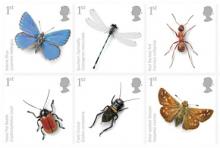93% des cours d’eau français contaminés par les pesticides
Pour le Commissariat général au Développement durable, la contamination par les pesticides est « quasi généralisée ». Dans 35 % des cas, l’eau est même jugée « impropre à la consommation humaine ». La contamination par les pesticides des cours d’eau en France est « quasi généralisée », les grandes régions agricoles ou viticoles du bassin parisien, du nord et du sud-ouest étant les plus touchées, indique le Commissariat général au Développement durable. « La contamination des cours d’eau est quasi-généralisée en France, essentiellement par les herbicides en métropole et des insecticides en Outre-mer », écrit le Commissariat dans une note « indicateurs et indices » datée du 22 juillet et consultable sur le site du ministère de l’Ecologie. Les zones les plus touchées sont les grandes régions céréalières, maraîchères ou viticoles que sont le nord de la France, le Bassin parisien, le Sud-Ouest, l’amont du Rhône et la Martinique. « Seuls 7% des points en sont exempts. Ils sont majoritairement situés dans des régions peu agricoles ou à agriculture peu intensives », soit le quart sud-est de la France et l’Auvergne, écrit le Commissariat.










